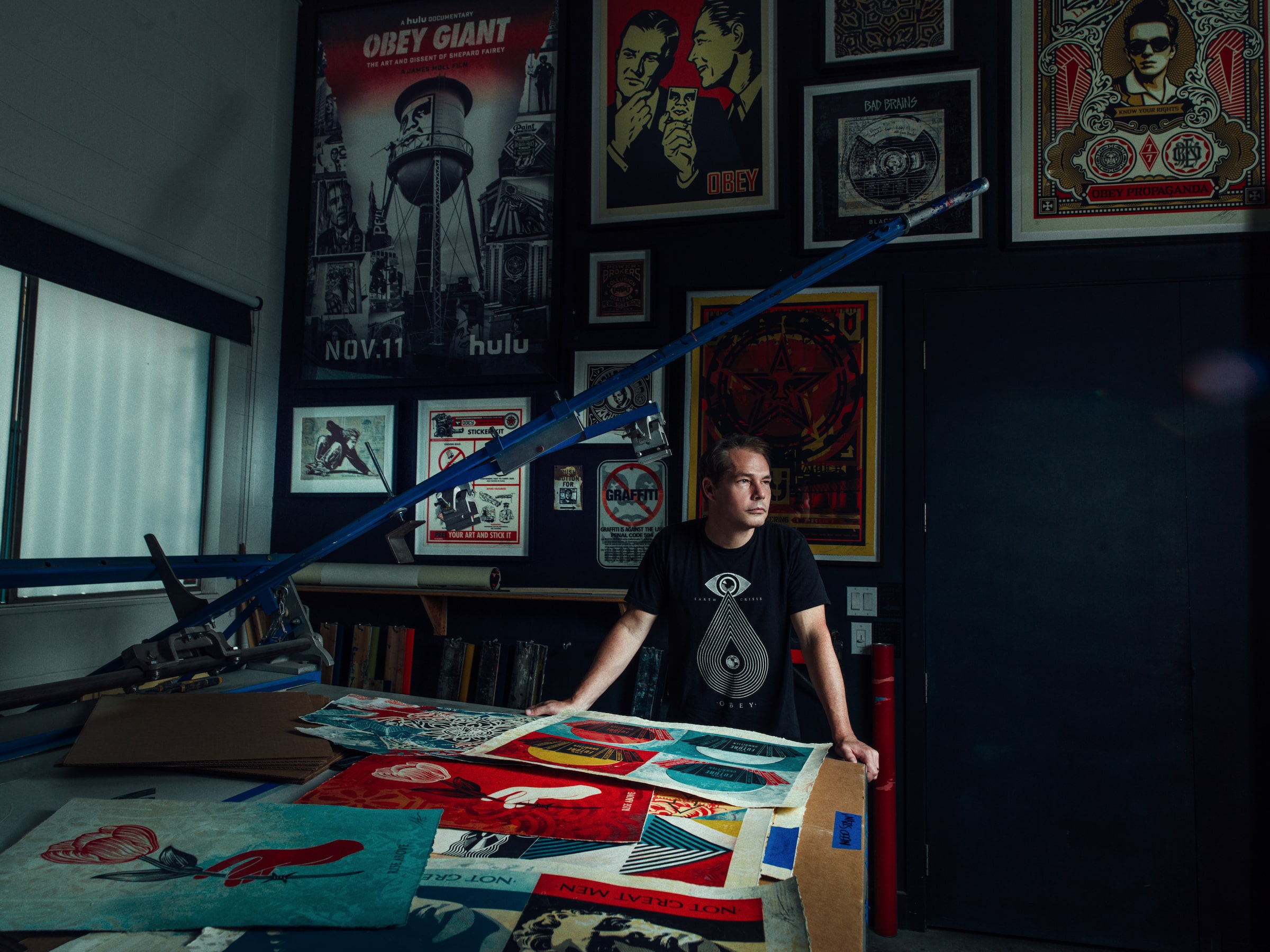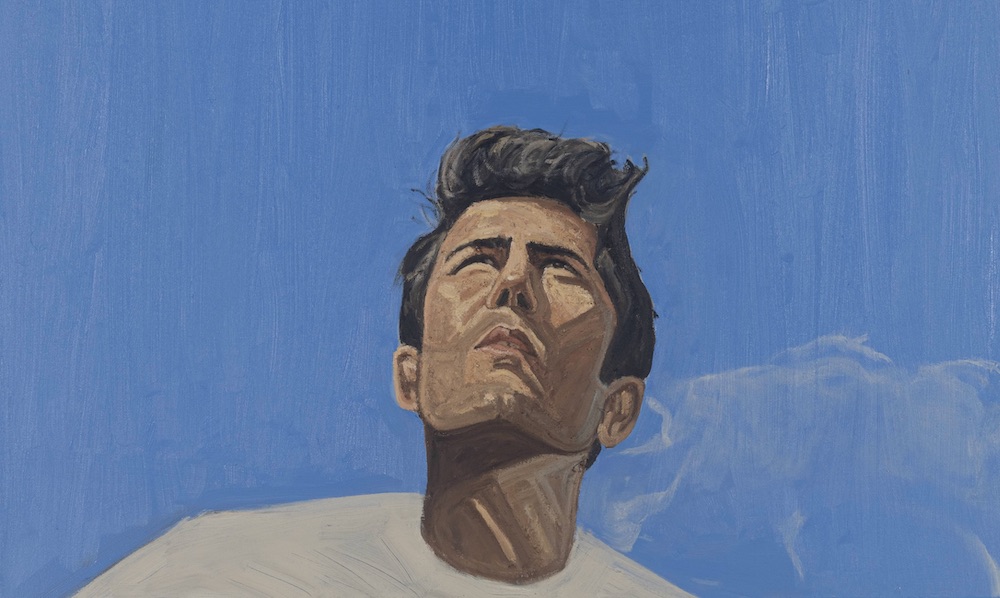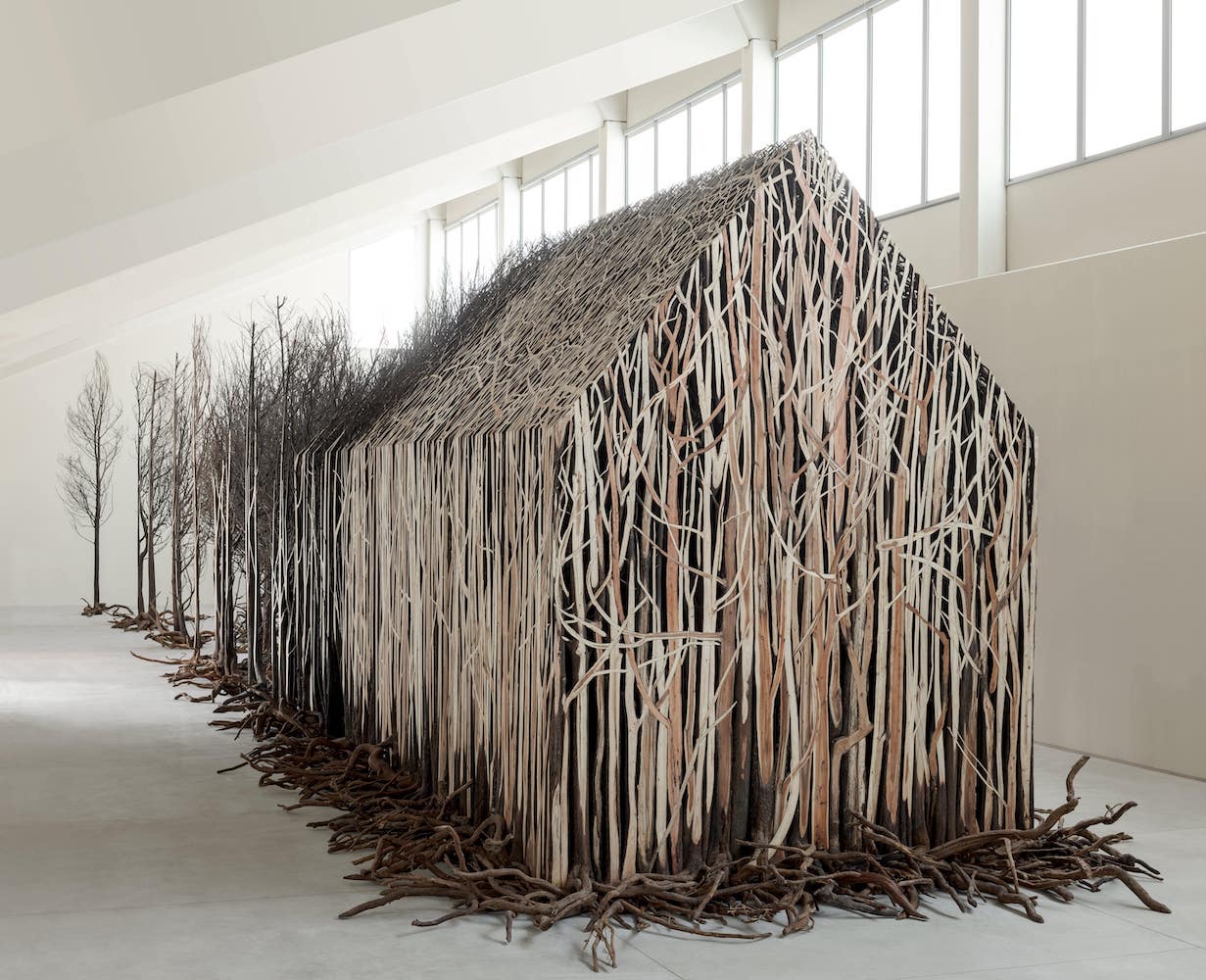When the artist Justin Brice Guariglia became a father, his moral compass inevitably shifted. Among other things, that meant placing the world’s current ecological crisis front and center in his practice. Through photography, sculpture, and installation, Guariglia creates work that is hopeful about the future, while bringing awareness to the fight against climate change. He encourages viewers to engage in dialogue and challenge the status quo.
Recently, Whitewall caught up with Guariglia to learn more about how his work is influencing our understanding of the most urgent issues of today.
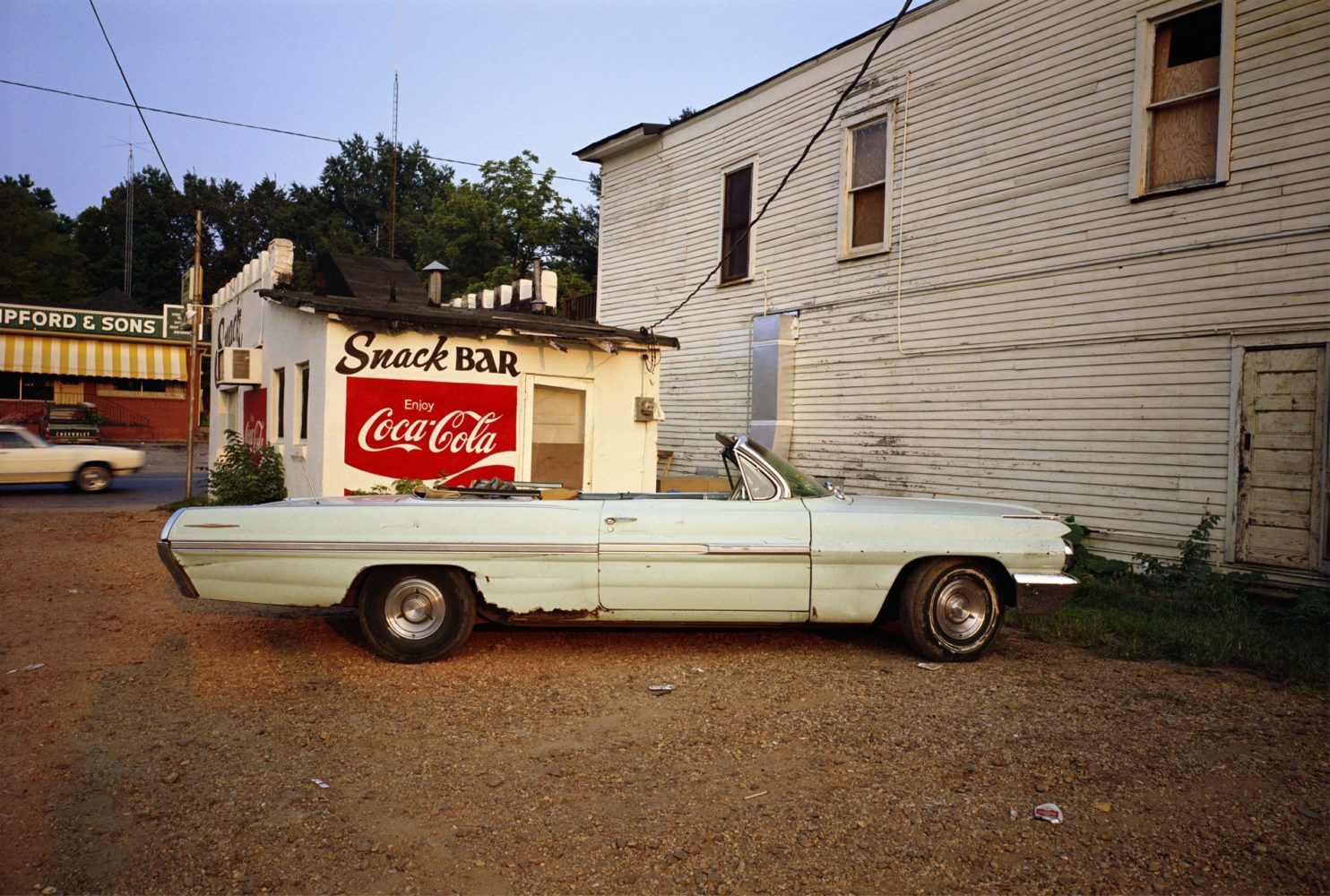
William Eggleston, “Untitled”, c. 1973-1978; © Eggleston Artistic Trust, courtesy of Eggleston Artistic Trust and David Zwirner.
WHITEWALL: When did your artistic practice begin to focus more on our current ecological crisis?
JUSTIN BRICE GUARIGLIA: While I’ve always had an affinity for the natural world, becoming a parent really shifted my compass toward the future. When you become a parent, ethics, morals, and values move front and center. And when they did, I noticed that the ecological crisis was the elephant in the room. Responding to it is, frankly, the moral imperative of our time, so I felt a strong need to respond. I’m with Camus, who said, those of us that can speak have a responsibility to do so.
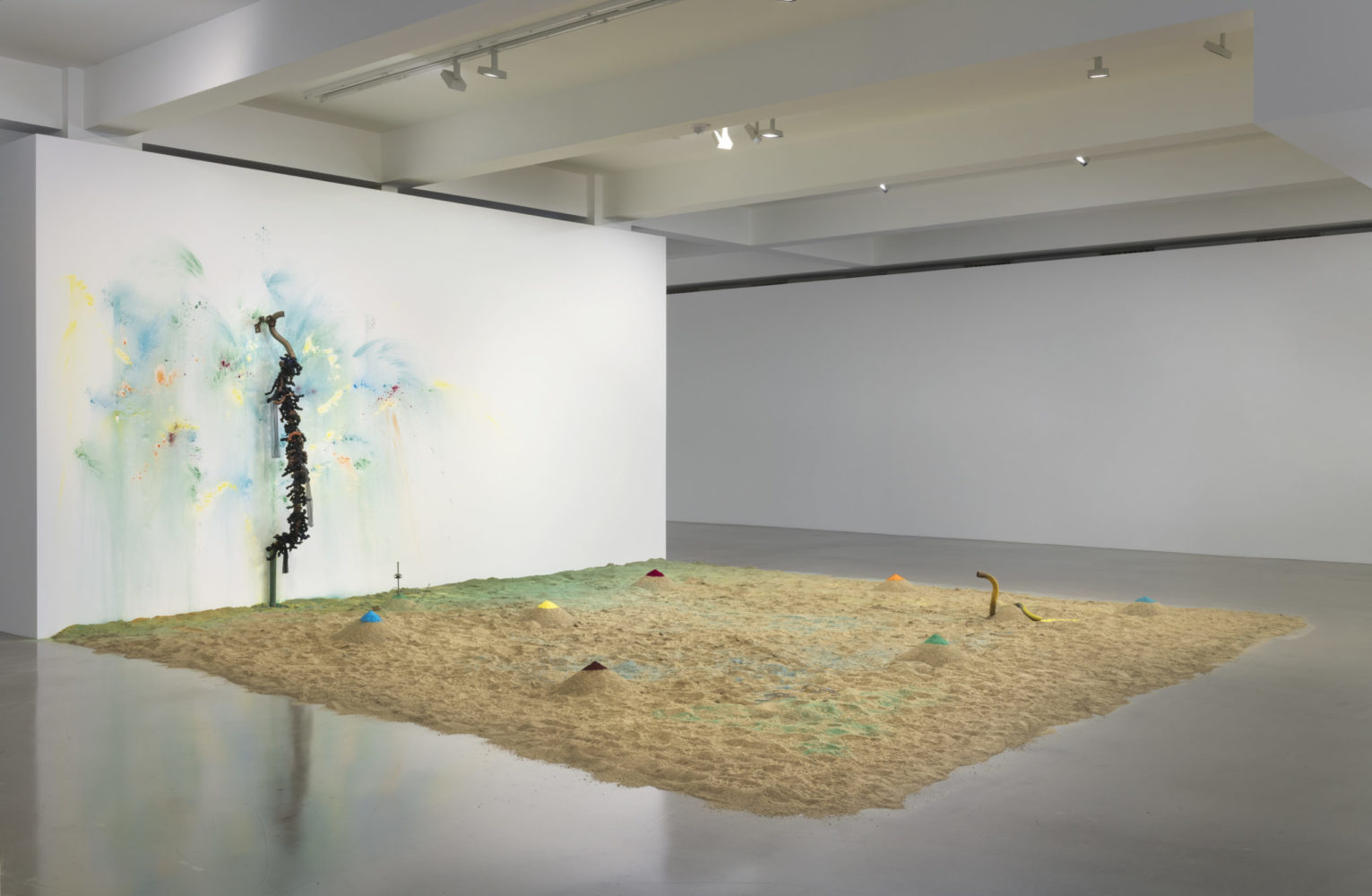
Senga Nengudi, installation view, “Senga Nengudi” at Sprüth Magers; © Senga Nengudi, photo by Robert Wedemeyer, courtesy of the artist and Sprüth Magers.
WW: How do you move between photography, sculpture, and installation in your practice?
JBG: Each medium you mentioned is like its own language. Each of us receives (and perceives) information in different ways, so varying languages allows artists to appeal to a greater audience, engage them in a dialogue, and, hopefully, motivate them to think about the issues being addressed.
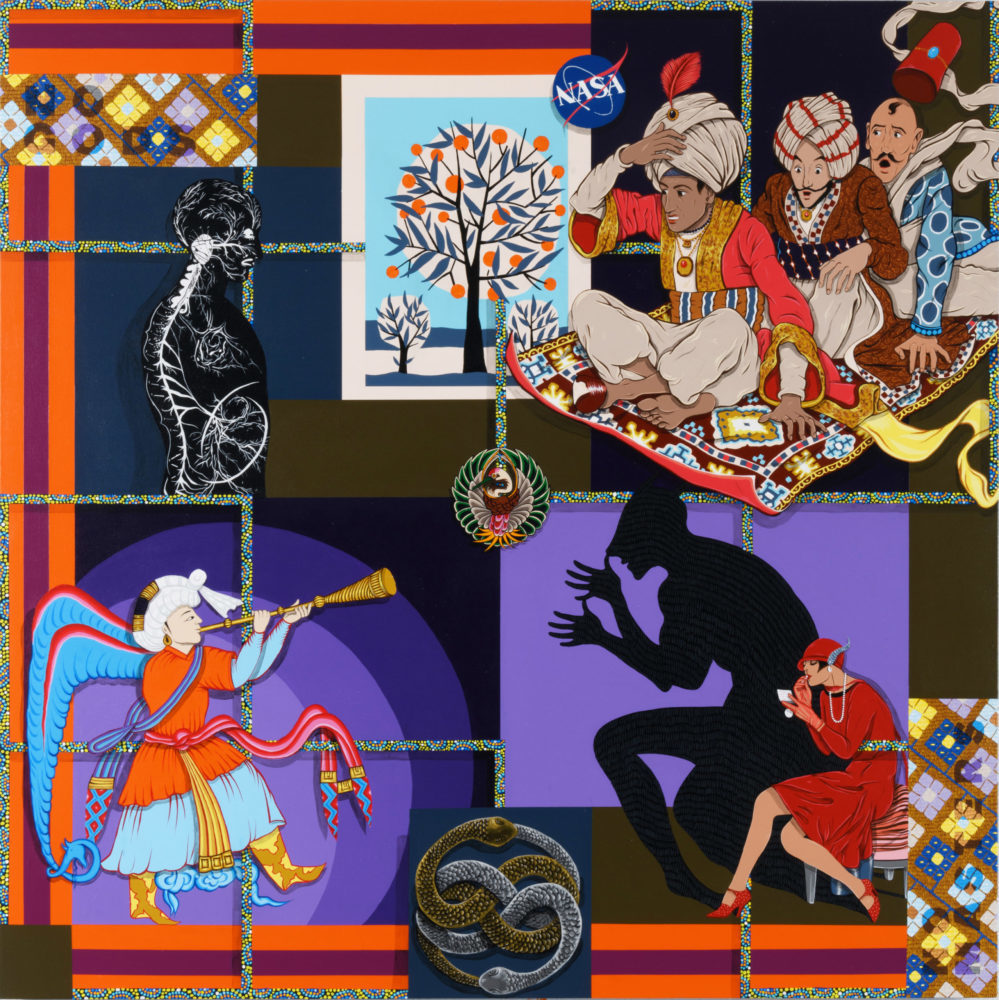
Amir H. Fallah, “No Gods No Masters”, 2020, 60 x 60 inches, acrylic on canvas; © Amir H. Fallah, courtesy of the artist and Shulamit Nazarian.
WW: What kind of message are you trying to convey to viewers through your work?
JBG: I make the work I make because I am hopeful for our future. Art is an amazing tool that can help foster change by dynamically shaping our culture, and right now the shift we need is to broadly raise greater public awareness on the ecological crisis and encourage action at all levels. I hope that when people view my art, they will feel compelled to join this dialogue.
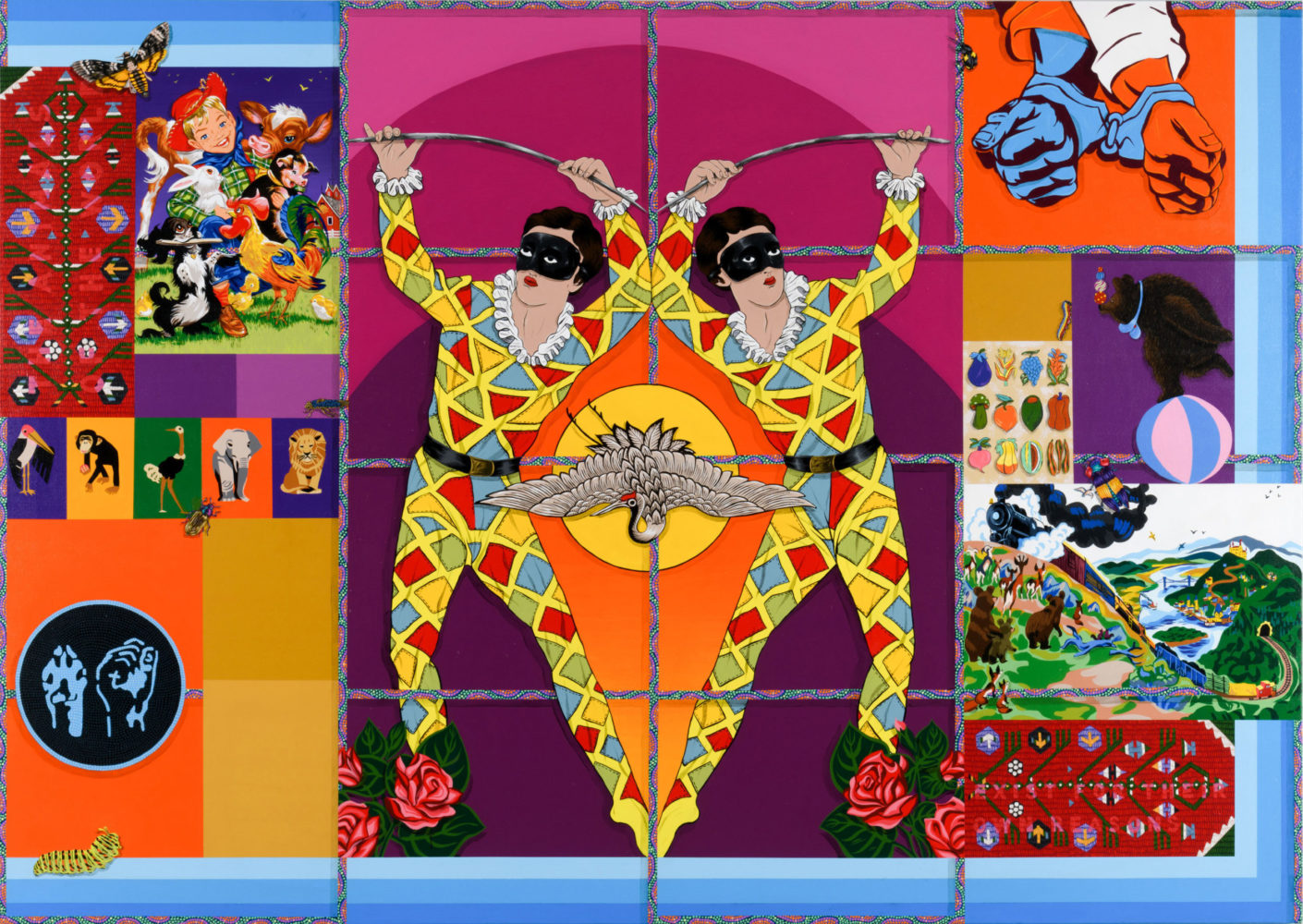
Amir H. Fallah, “The Animals Of The World Exist For Their Own Reasons”, 2019, 66 x 96 inches, acrylic on canvas; © Amir H. Fallah, courtesy of the artist and Shulamit Nazarian.
WW: What is the role of the artist, do you think, in combating climate change?
JBG: As the world becomes more disorientating, art will play a more critical role in society because of its unique ability to make reality apparent. Art can help us question and challenge our existing moral, philosophical, and ethical assumptions—in that way, art can transform us, our society, and our politics.
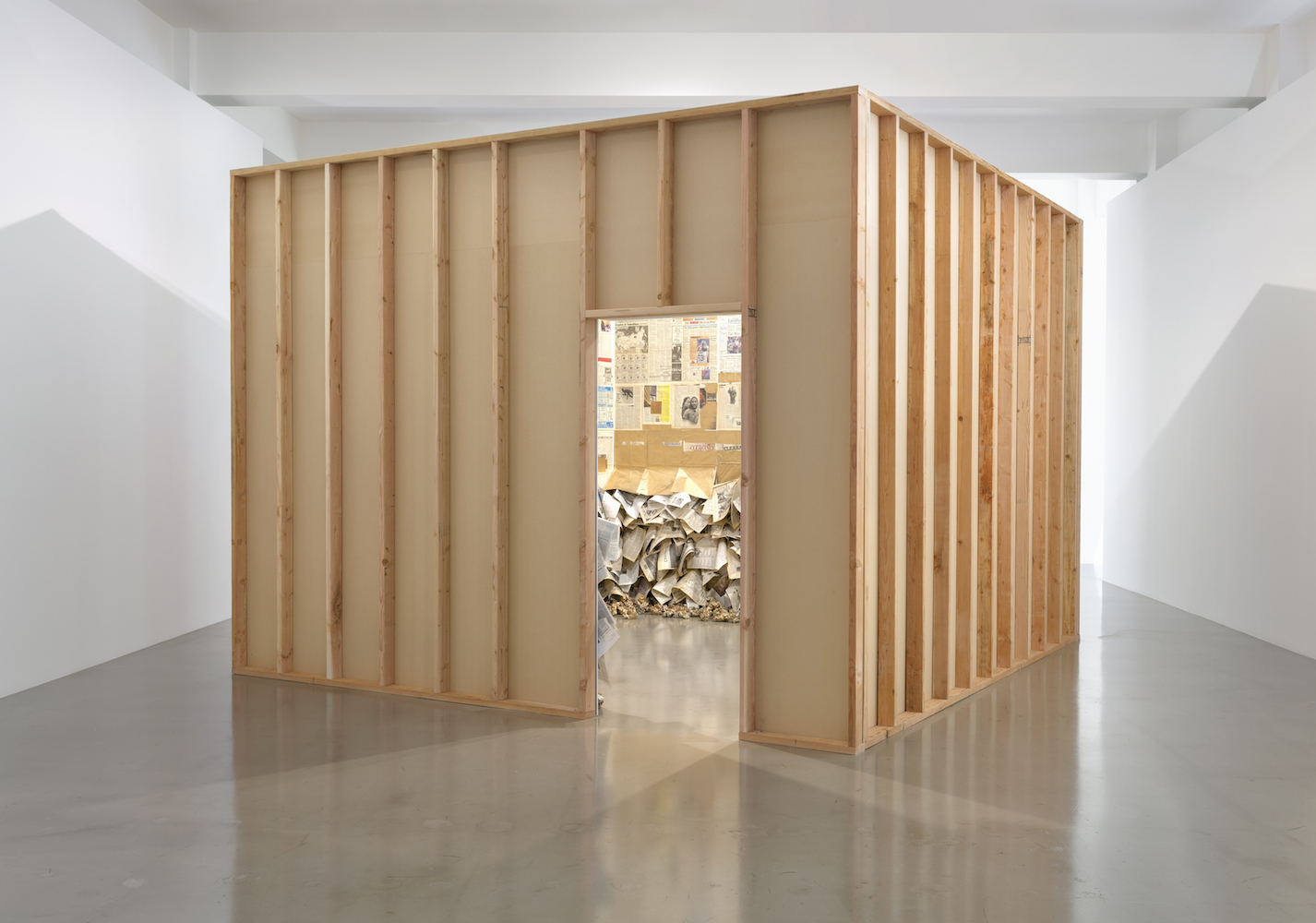
Senga Nengudi, installation view, “Senga Nengudi” at Sprüth Magers; © Senga Nengudi, photo by Robert Wedemeyer, courtesy of the artist and Sprüth Magers.
WW: Can you tell us about the work you recently presented at the BRAFA art fair in Brussels with Maruani Mercier?
JBG: Late last year I was finishing up a new polystyrene work entitled THE END when Maruani Mercier called and asked what they could show at BRAFA. The work, which is 10 feet wide and 8 feet tall, is part of a series of works where I take an aerial image of a section of a Greenlandic glacier, which I took while flying on missions with NASA, print it onto the surface of a thick industrial polystyrene panel, then hand-carve text into the surface. It’s brutalist, blunt, and ecologically perverted, but sadly, ecologically speaking, those are the times we live in.
I was in Asia during the fair and suddenly I started getting a flood of text messages from the gallery. They were sending me photo after photo showing groups of visitors coming by to see the work. The work had gotten the attention of the BRAFA curatorial staff and became one of 10 works included in the BRAFA curated tour. It ended up bringing over a thousand additional visitors into the booth. Little did anyone realize at the time, nor when I was making the work, that it was literally “THE END” of the world as we knew it.
WW: How did you start flying on missions with NASA?
JBG: I was really interested in glaciers and how climate scientists were saying they were quickly disappearing around the planet. I had never seen a glacier in real life, so I began to do some research and learned that NASA had an earth science mission that was flying over them to study them. So I reached out to NASA to see if I could learn more. I wanted to have a scientific understanding so that I could create something relevant, or at least inspired by actual science, but the glaciers in Greenland are also quite inaccessible—you can’t just pop out there and walk around. I’m exceptionally grateful the scientists, and the organization as a whole, allowed me to join them in the field. I eventually flew on seven NASA mission flights, and gathered a ton of raw material to take back to my studio and work with.
WW: Can you tell us about what that experience is like?
JBG: I find it difficult to put into words an experience that is innately sublime, but I can say the Arctic is spellbinding and dreamlike—it’s a place that seems to stretch on forever, beyond the edges of imagination. It makes you feel insignificant and humble, and provides a fresh perspective on what it means to be a human being on this vast planet.
WW: It feels like this moment is waking more people up to the urgency of addressing the climate crisis. How has it affected your artistic focus and output?
JBGb As humans, we must recognize that we have a moral responsibility for our actions and our impacts, and unlike my parents’ generation, which was responding to war, responding to climate change has become the moral imperative of our time. So it’s encouraging that more people are paying attention, but we really need everyone to pay attention and become more aware of the issues at stake, which are existential. We might be able to hide from the coronavirus, but there will be no hiding from the impacts of climate change and ecological collapse. It will touch everyone.
WW: You told us that you make the work you do because you are hopeful for the future. Is that ever challenging, to stay hopeful in your work when dealing with such heavy issues?
JBG: The word “hope” is a little passive for my liking. If you follow the scientists and the news of climate change as I do, it can be very fatiguing, but we cannot turn away and tune out. I don’t feel that’s an option. I’ve never made art for entertainment. I didn’t become an artist to decorate sofas. Art for art’s sake, in our post-truth political age, feels irresponsible. The issues we are faced with today are too urgent, too grave, and existential. I channel my energy, and the knowledge I have gained from my fieldwork, and time with scientists and journalists, into forging art that can be a positive force for social and political change. Art, after all, is the original cultural influencer, and right now we need all hands on deck and all tools deployed.





